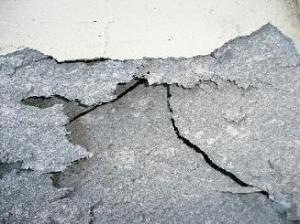 WA tops as having the highest rate of Australians being diagnosed with mesothelioma than any other region in the country, with two out of every three victims believed to have contracted the deadly disease while at work.
WA tops as having the highest rate of Australians being diagnosed with mesothelioma than any other region in the country, with two out of every three victims believed to have contracted the deadly disease while at work.
The previous year witnessed 95 West Australians as among the 110 women and 465 men who were given the disheartening news that they had contracted the terminal disease, which is largely attributed to regular and prolonged exposure to the deadly fibres.
Of the total population diagnosed of the deadly disease, 20% were reported as younger than 65, which likewise included home renovators or technically considered third-wave victims following the first-wave victims who are manufacturers and miners and then the tradesmen.
The West Australian region recorded a mesothelioma diagnosis rate of 3.9 people per capita (or an equivalent of 100,000 people, which is twice the rate recorded for Victoria and South Wales that had the figures at 1.8 people per capita diagnosed.
In 2013, the national rate of newly diagnosed cases was at 2.2, with South Australia and Queensland recording 2.5 and 2.6 respectively. The sobering numbers received from the Australian Mesothelioma Registry were accumulated and organised for 2013 Mesothelioma in Australia, a report systematically funded and structured by Safe Work Australia and Comcare.
The national figures came amidst the popular news that white asbestos was evidenced as existing outside Rottnest Island bungalows, a region considered as among Western Australia’s most popular holiday spots.
White asbestos is a major element in the production of gaskets, clutch plates, brake pads, blocks, and linings. Previously, it was also used in sealants, vinyl flooring, cement materials, piping, and in insulation materials before it was completely banned.
Slater and Gordon Lawyer Simon Millman said that younger patients of asbestos-related diseases were being diagnosed. Millman added that with the thirty- to forty-year-old lag between the actual exposure and the medical diagnosis, it is no surprised that the majority of new cases identified in the report were those belonging to the 65 and above age bracket and a disappointing 20% of new cases for those under 65.
Mr. Millman added that, without a doubt, asbestos is still a prominent concern for the community as Western Australia is seeing a third wave of victims, consisting largely of home renovators as well as people being exposed as children. He explained that the first wave of victims were those group of miners and manufacturers while the second wave consisted of the construction workers and tradesmen who were largely exposed to the hazardous asbestos fibres present in building materials.
The Slater and Gordon lawyer emphasised that while the reports show encouraging figures of mesothelioma diagnoses dropping to 575 in 2013 from being 652 in 2012, it is not yet the time to feel confident and rest on their laurels. He attributed this to the fact while the Wittenoom mine may have been closed for almost fifty years already, “the legacy of its deadly dust is still affecting us to this very day and it will continue to be a danger as long as it remains in our homes and workplaces.”
Secretary Meredith Hammat of UnionsWA further explained that it is alarming to note that two out of three people diagnosed with the terminal disease since 2010 had most likely been exposed to asbestos.


